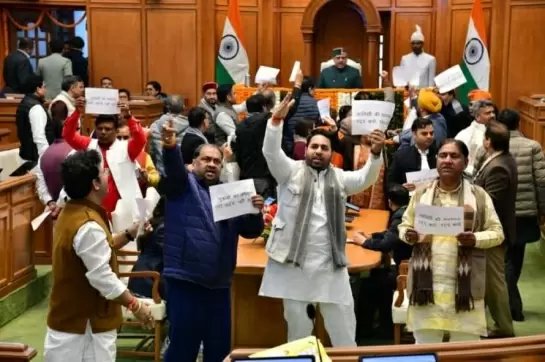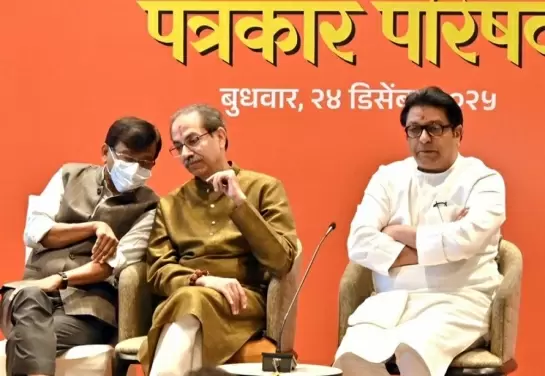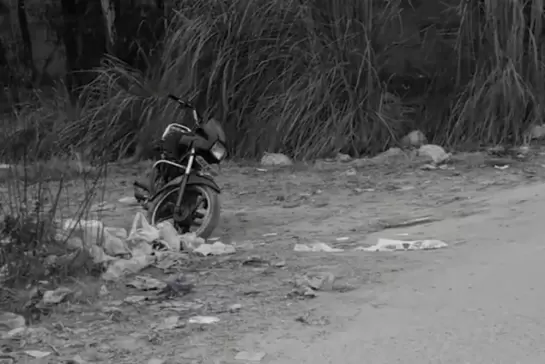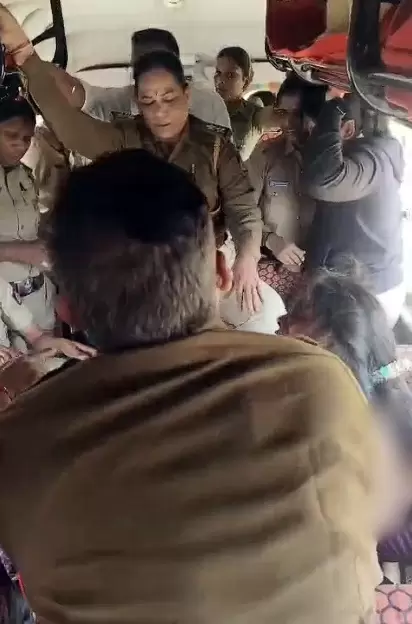Sharbendu De: Merging Magic, Photography, and Ethnography to Address Climate Issues
26-August-2023
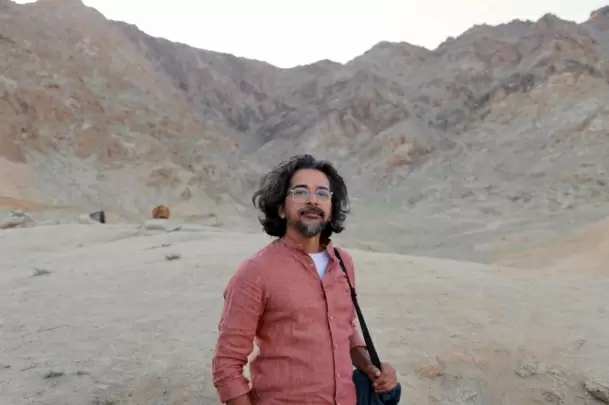
It is barren all around. Nothing grows, the only reminder of life is the consistent growling of the wind. A still life… But we talk about the forest, the enigmatic dense ones he crossed to live in a place far removed from the world most prefer to call real. After all, magic is not something distant or far-fetched for photographer and scholar Sharbendu De, but in fact a constant reminder of the existence of a dual world. Which one is real -- no one can say…
In Ladakh for the debut edition of 'Sa Ladakh', Asia's highest-ever contemporary land art exhibition exploring climate, culture and community, supported by the German embassy in India, this conceptual photographer, a 2022 Visiting Artist Fellow at Harvard University through projections, put forward his thoughts on the capitalist machinery of megacities, our myopic self-centrism and disregard for nature, leading to calamities like global warming, glacial ice-melting, crop failures, air pollution etc.
Born in the Andaman and Nicobar islands, De, who has been covering calamities -- the Asian Tsunami, Nepal Earthquake, Kashmir floods etc. insists he does not have the urge to do the same as a photojournalist.
"I saw how the Asian Tsunami destroyed my island -- there was a feeling that I owed something to my home, and it 'trained' me in a certain way. Once back from England after studying photography, I got contracts to cover a lot of natural tragedies and worked on natural disasters. However, post the Nepal earthquake, it became too much for me..."
Best known for his work 'Imagined Homeland' made over seven years (2013-19), for which he adopted a peculiar approach to telling the story of the Lisus people in Arunachal Pradesh and their relationship with nature -- the intangible cultural assets that define and distinguish them from the urban monetised societies, he adds, "I rooted my practice in ethnographic research, extensive fieldwork, journalistic interviews and borrowed from dream symbolism and adopted magic realism and poetic aesthetics that define and distinguish them from the urban monetised societies."
Stressing that 'Imagined Homeland' is not about him, but more about more so about the people and the mysterious elements of nature, he asserts that the project was not just about meeting strangers, listening to their stories, and getting acquainted with an alien culture, but also some mystical experiences which he has written about.
"The forest is alive in almost all senses of the word. While I went in with an egocentric mind, as I kept on with the strenuous journey, the terrain chipped away all my ego. Don't forget, it took three days of walking through the jungle to reach where I did."
For someone whose work has been exhibited across Guangdong Times Museum (2022), BBA Art Gallery, Berlin (2022), Photoville (2022), Rencontres d'Arles, Arles (2022), Asian Art Biennale, Taiwan (2021), the Indian photographic world is much resistant to several approaches and prefers to follow the paths and practices that have already been worked on.
"With 'Imagined Homeland', I created a documentary, but as my engagement intensified with the community and the discourse, the young students I teach would question me and that led to me looking for a new way. When I first photographed the community members in studios, I realised it was problematic and found a way to not see them as specimens but as humans. There was this urge to observe their dreams and aspirations, and in that way, we are all the same. So I did not build it on our differences but on our commonalities and what makes us similar."
Also a teacher of photography at different institutes, De smiles that he shares a love-hate relationship with the academic side of the art form.
"I notice a resistance to theory, as photography is mostly perceived as practice. However, a lot more emphasis is needed on how to go deeper. Great pictures always take help from external elements, so why are we so obsessed with technique?" he asks.
Currently working on the sequel to 'An Elegy for Ecology', dealing with heat waves, he says, "I am simultaneously researching on indigenous communities relationships with nature to see if it can strengthen conversations on climate solutions focused on multispecies ecologies." - IANS
Vijay’s ‘Jana Nayagan’ Censor Clearance Hits Last-Minute Hurdle; Madras HC Reserves Verdict On Release Day
Iran Gripped By Deadly Protests Over Economic Crisis; 27 Killed By Security Forces
Kerala Lottery Ticket Smuggling In TN’s Coimbatore, Police Intensify Surveillance
Two Hindu Men Killed In Bangladesh Within 24 Hours Amid Rising Attacks On Minorities
IMD Warns Of Heavy Rain In TN On Jan 9–10 Due To Bay Of Bengal System





